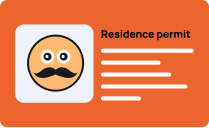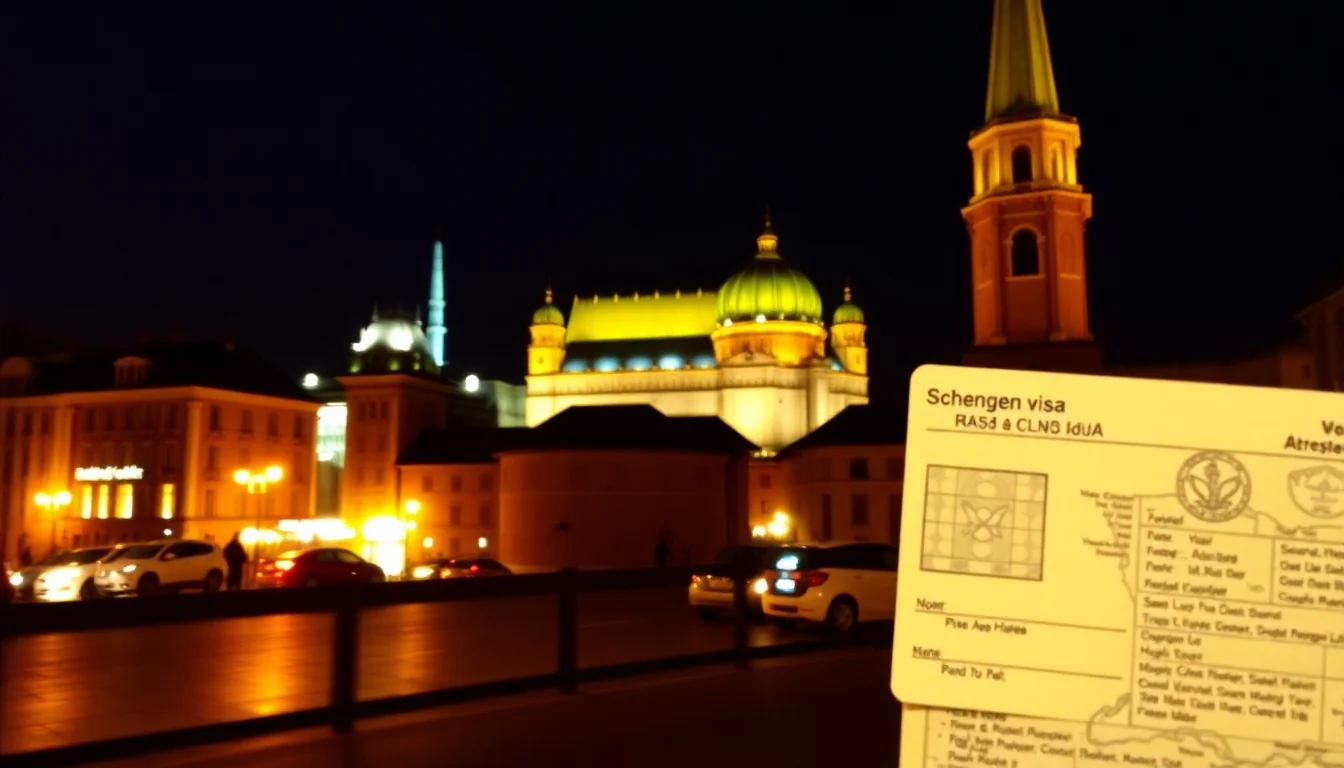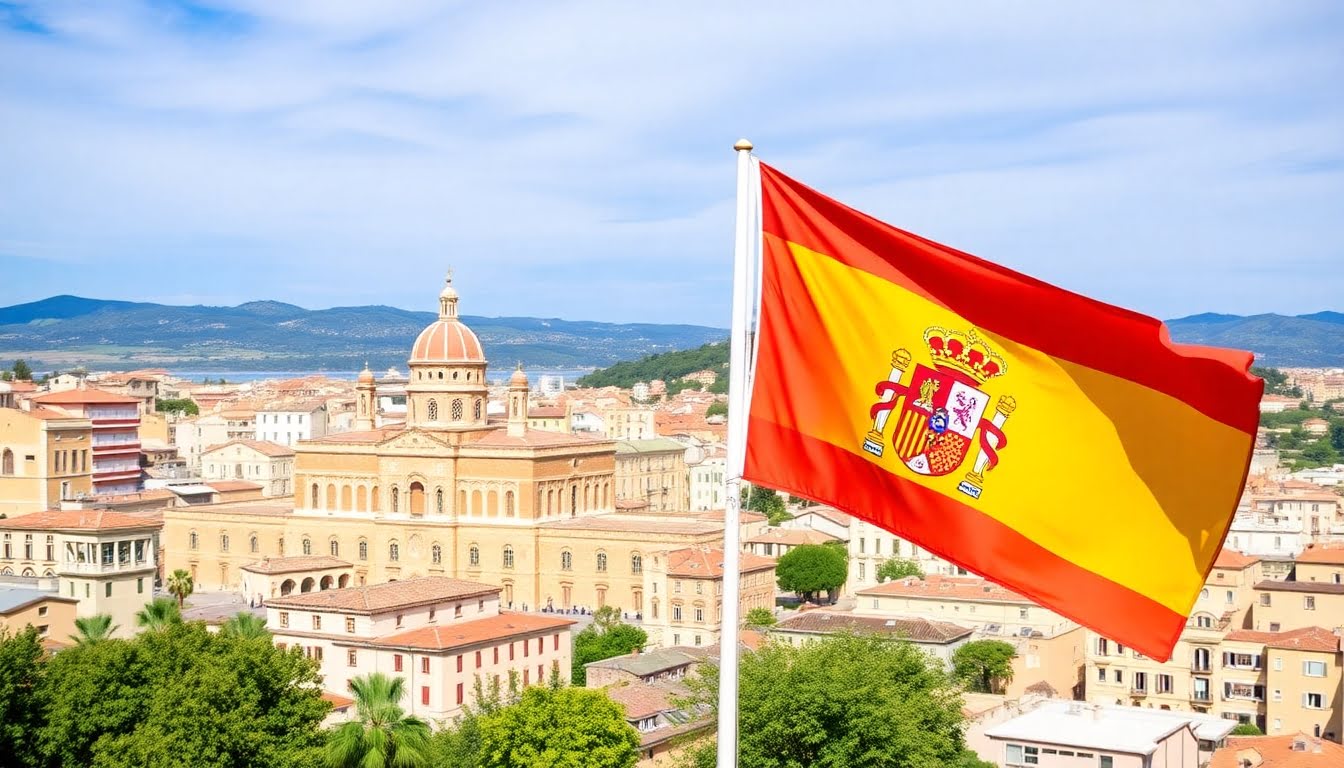Turnkey relocation to Spain from 6 weeks
We will help you to obtain a Spanish residence permit for the whole family with a minimum tax burden!
Read more
Get a free consultation
From 0 €
Tax burden per month
From 6 weeks
Term for obtaining a residence permit
5 years
Until permanent residence permit


How to get a Schengen visa in 2025: a complete guide

Despite the fact that European countries have terminated the agreement on simplified visa procedures with the Russian Federation, and some Schengen member states have even suspended the issuance of tourist permits, obtaining this type of travel document remains one of the most relevant issues among Russian citizens.
 A Schengen entry permit (or Type C permit) is a travel document that allows travel across 27 countries that are part of the Schengen Area without needing separate entry permits for each country. It is one of the most popular types of entry permits for tourists, language course students, and business travelers planning to visit one or more European countries.
This visa is short-term: it allows staying in Schengen countries for no more than 90 days within a 180-day period. However, the document itself can be issued for up to 5 years.
Currently, the Schengen Area includes:
A Schengen entry permit (or Type C permit) is a travel document that allows travel across 27 countries that are part of the Schengen Area without needing separate entry permits for each country. It is one of the most popular types of entry permits for tourists, language course students, and business travelers planning to visit one or more European countries.
This visa is short-term: it allows staying in Schengen countries for no more than 90 days within a 180-day period. However, the document itself can be issued for up to 5 years.
Currently, the Schengen Area includes:
 Visa applications for entry into Schengen countries are submitted through specialized visa centers located in various Russian cities. You must choose the appropriate country (based on where you’ll spend the most time if visiting multiple countries) and a visa center closest to your place of residence to schedule an appointment.
Please note: Russian citizens can also apply for a Spanish visa at centers in Armenia and Uzbekistan without needing local residence permits or registration.
Visa applications for entry into Schengen countries are submitted through specialized visa centers located in various Russian cities. You must choose the appropriate country (based on where you’ll spend the most time if visiting multiple countries) and a visa center closest to your place of residence to schedule an appointment.
Please note: Russian citizens can also apply for a Spanish visa at centers in Armenia and Uzbekistan without needing local residence permits or registration.
 Applicants often face Schengen visa refusals due to mistakes made when completing the application form. Here are the most frequent ones:
Applicants often face Schengen visa refusals due to mistakes made when completing the application form. Here are the most frequent ones:
Go back to the blog
What is a Schengen visa?
 A Schengen entry permit (or Type C permit) is a travel document that allows travel across 27 countries that are part of the Schengen Area without needing separate entry permits for each country. It is one of the most popular types of entry permits for tourists, language course students, and business travelers planning to visit one or more European countries.
This visa is short-term: it allows staying in Schengen countries for no more than 90 days within a 180-day period. However, the document itself can be issued for up to 5 years.
Currently, the Schengen Area includes:
A Schengen entry permit (or Type C permit) is a travel document that allows travel across 27 countries that are part of the Schengen Area without needing separate entry permits for each country. It is one of the most popular types of entry permits for tourists, language course students, and business travelers planning to visit one or more European countries.
This visa is short-term: it allows staying in Schengen countries for no more than 90 days within a 180-day period. However, the document itself can be issued for up to 5 years.
Currently, the Schengen Area includes:
- all countries of the European Union (except Ireland),
- some non-EU countries: Norway, Iceland, Switzerland, Liechtenstein.
- Appointments must be booked well in advance, as visa centers have started implementing biometric confirmation (which doesn’t always work reliably); processing times for submitted applications can take up to 45 days, and available appointment slots disappear within minutes.
- To apply for a visa, you now need to provide an extract from your employment record book (for employees), an extract from the Unified State Register of Legal Entities or Individual Entrepreneurs (for business owners), or another official document proving economic ties with your home country (for pensioners and unemployed persons).
Types of Schengen visas
- Single-entry. Allows entry into the Schengen Area only once and staying for a specified period. After leaving, the visa becomes invalid.
- Double-entry. Allows two entries into the Schengen Area during the validity period.
- Multiple-entry. Allows unlimited entries into the Schengen Area, provided the 90/180-day rule is observed. The validity period of such a visa ranges from 3 months to 5 years.
How to get an open (multiple-entry) Schengen visa
Below is a list of documents required to obtain a Schengen visa, using the example of submitting an application to the Spanish consulate:- Application form filled out in English or Spanish and signed by the applicant;
- Valid international passport with free pages;
- Copies of all pages of current and expired international passports (if they contained Schengen visas);
- Copies of filled pages of the Russian internal passport;
- One photo sized 3.5 x 4.5 cm;
- Travel itinerary with descriptions of travel and transit stops and connections;
- Hotel and flight bookings;
- Employment record extract or business registry extract;
- Medical insurance with minimum coverage of €30,000 and valid throughout the Schengen Area.
- Extract from the Spanish property ownership register;
- Official invitation from a foreigner, processed through the Spanish police, or a notarized invitation from the property owner (if they do not reside in Spain permanently);
- Copies of ID documents of the inviting person;
- Birth or marriage certificate, if the property owner is a relative of the invited person.
- Bank statement showing available funds at the rate of €90 per person per day;
- Employment certificate indicating position, salary, and length of service;
- Documents proving ownership of real estate in Russia (if the person is temporarily unemployed).
Application Procedure
 Visa applications for entry into Schengen countries are submitted through specialized visa centers located in various Russian cities. You must choose the appropriate country (based on where you’ll spend the most time if visiting multiple countries) and a visa center closest to your place of residence to schedule an appointment.
Please note: Russian citizens can also apply for a Spanish visa at centers in Armenia and Uzbekistan without needing local residence permits or registration.
Visa applications for entry into Schengen countries are submitted through specialized visa centers located in various Russian cities. You must choose the appropriate country (based on where you’ll spend the most time if visiting multiple countries) and a visa center closest to your place of residence to schedule an appointment.
Please note: Russian citizens can also apply for a Spanish visa at centers in Armenia and Uzbekistan without needing local residence permits or registration.
Completing the Application Form
- The application form is filled out online on the BLS visa center website and then printed double-sided
- Personal data must match the information in your international passport and be written in Latin characters
- You must also provide information about your closest relatives, including names and contact details
- Include your profession, job title, and current employer
- Indicate the country of residence and destination country (if arriving in Spain indirectly)
- State entry and exit dates for Spain and trip duration
- Indicate whether you have submitted fingerprints in the last 5 years for previous Schengen visa applications
- Sign in the appropriate fields
- If applying for a family or group visa, a separate application form must be filled out for each member
Processing Time and Visa Fees
One of the main concerns for applicants is how long it takes to get a Spanish visa. The average processing time via the Spanish consulate is around 14 days, although it may be extended up to 45 days. Due to slot shortages, waiting time for an appointment may reach up to a month. As for the visa fee:- Applicants aged 12 and over: €90
- Children aged 6–12: €45
- Children under 6 years old: no fee
- Prime Time submission: additional ₽10,000
- Passport collection during Flexi Hours (Mon–Fri, 09:00–15:00, 17:00–18:00): ₽600
How to Track Your Schengen Visa Application Status
Via official visa center websites
If you submitted your application through a visa center (e.g., VFS Global or BLS Spain), you can usually track your application online. Go to the relevant visa center's website and locate the “Track Your Application” section. Enter your passport number or visa application number and the tracking code (found on the submission receipt). Click Track to see the current status (e.g., “in process,” “ready for pickup,” etc.). You can also find the working hours for collecting your visa and passport.Via SMS or Email
This is often a paid add-on service. If selected, you'll receive notifications when your passport is ready for collection or when your application has been processed.Common Problems and How to Solve Them
 Applicants often face Schengen visa refusals due to mistakes made when completing the application form. Here are the most frequent ones:
Applicants often face Schengen visa refusals due to mistakes made when completing the application form. Here are the most frequent ones:
- Incorrect transliteration of first and last names into Latin script;
- Missing explanations for abbreviations;
- Incorrect address of residence;
- Incorrect indication of travel purpose and number of entries;
- Missing biometric data information.
- Improper use of previous visas (e.g. overstaying or visiting countries not listed);
- Cancellation of flight or hotel bookings during visa processing;
- Poorly prepared travel itinerary;
- Insufficient financial means for the trip.
- Carefully review the reasons for refusal;
- If the rejection was due to errors, correct them and reapply in 2–3 months;
- If the refusal is based on suspected violations of immigration laws, seek advice from a qualified specialist.
How to Minimize the Risk of a Schengen Visa Refusal
Proper document preparation and strict adherence to consulate requirements are crucial. Here are key tips to increase your chances of approval:1. Correctly fill out the application form
Make sure all information—including your name, surname, date of birth, and document numbers—matches your passport exactly.2. Apply to the correct consulate
Submit your application to the consulate of the country where you will spend the most time. If your time in each country is equal, apply to the consulate of the country you will enter first.3. Prepare all required documents
All documents must be up-to-date and meet the consulate's criteria. Your passport must be valid for at least 3 months after your planned exit from the Schengen area.4. Provide proof of financial means
Submit bank statements for the past 3–6 months to prove you have sufficient funds for your trip.5. Show your travel history
Having previous visas for Schengen or other well-regulated countries (like the US or UK) can increase your chances. Submit copies of those visas if available—it shows that you're a trustworthy traveler.6. Demonstrate ties to your home country
Consulates want to ensure you will return after your trip. Provide evidence of your ties, such as:- Employment (a letter from your employer);
- Family or property ownership;
- Enrollment in a school or university.
7. Do not submit multiple applications at once
Applying for visas to several countries at the same time can raise red flags and lead to refusals. Always apply to one consulate that corresponds to your itinerary. Applying to another country’s consulate immediately after a refusal may also result in rejection, as all Schengen states share a common database. Our company offers full support throughout the visa application process—from consultations to document submission. We will:- Advise you on the type of visa that suits your situation (tourist, business, student, etc.);
- Help you choose and prepare the required documents;
- Accurately complete the visa application and related forms;
- Gather all necessary supporting papers, including health insurance, proof of funds, flight tickets, and hotel bookings;
- Offer flexible appointment booking options, including expedited ones;
- Monitor the visa status and keep you informed of the results.
Benefits of Working with Us
- Lower risk of mistakes in your application;
- Time-saving: no need to navigate the paperwork yourself;
- Expert support: our consultants will guide you through consulate requirements, especially helpful if this is your first Schengen trip;
- Convenience: we also assist with hotel and flight bookings, as well as planning your travel itinerary.


 06/05/2025
06/05/2025  Reading time: 8 min
Reading time: 8 min 





